Whether used freehand or mounted in a table, a router is possibly the most useful power tool in the woodshop. But working with a device that spins sharp carbide-tipped bits at dizzying speeds can be quite hazardous, unless you follow good safety practices each and every time you rout. Here are a dozen tips for using a router safely while getting the best results with this versatile performer.

Keep the stock secure
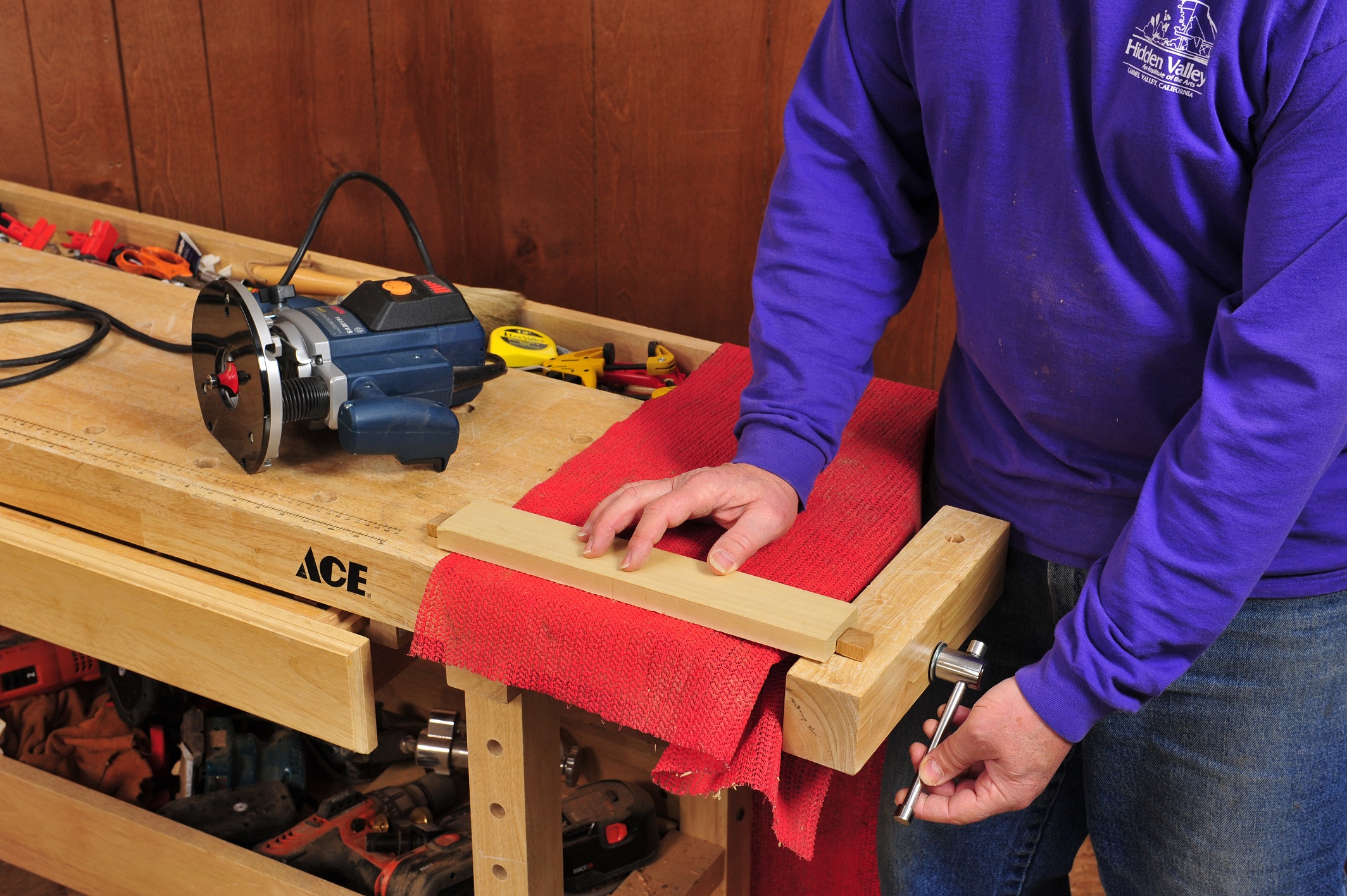 When using a router freehand, always make sure the workpiece is clamped down securely to your bench or work table (the exception is large workpieces, such as cabinets or furniture heavy enough to stay put on their own). Placing a friction mat atop the bench/table before clamping can help prevent the work from shifting. When routing boards too narrow to clamp, use bench dogs with the end vise on a traditional-style work bench to hold the strip steady.
When using a router freehand, always make sure the workpiece is clamped down securely to your bench or work table (the exception is large workpieces, such as cabinets or furniture heavy enough to stay put on their own). Placing a friction mat atop the bench/table before clamping can help prevent the work from shifting. When routing boards too narrow to clamp, use bench dogs with the end vise on a traditional-style work bench to hold the strip steady.
Keep your hands safe
 Always keep your hands and fingers well clear of the bit. When routing freehand, never use your free hand to hold the workpiece (see above). For safe router table operation, your table should be fitted with a guard that covers the area immediately above the bit. Whenever possible, use a push stick or push block to propel the work past the bit. This is mandatory for smaller and/or narrower workpieces, and helps keep your hands out of harm’s way when routing larger parts as well. It’s also a good idea to use a feather board to keep the work pressed against the fence and/or table as you rout. Not only does a feather board help keep fingers safe, but it can improve the quality of the cut by keeping the workpiece in the perfect position as it’s cut.
Always keep your hands and fingers well clear of the bit. When routing freehand, never use your free hand to hold the workpiece (see above). For safe router table operation, your table should be fitted with a guard that covers the area immediately above the bit. Whenever possible, use a push stick or push block to propel the work past the bit. This is mandatory for smaller and/or narrower workpieces, and helps keep your hands out of harm’s way when routing larger parts as well. It’s also a good idea to use a feather board to keep the work pressed against the fence and/or table as you rout. Not only does a feather board help keep fingers safe, but it can improve the quality of the cut by keeping the workpiece in the perfect position as it’s cut.
Unplug the router before adjustments
Never do any adjustments on a router without unplugging it first! Always disconnect the power when changing bits, servicing the router, or mounting an attachment, such as a fence. Make sure the router’s on-off switch is switched off before plugging it back in and confirm that the router’s collet and attachments, clamps, etc. are securely tightened before powering the router back up.
Chuck the bit correctly
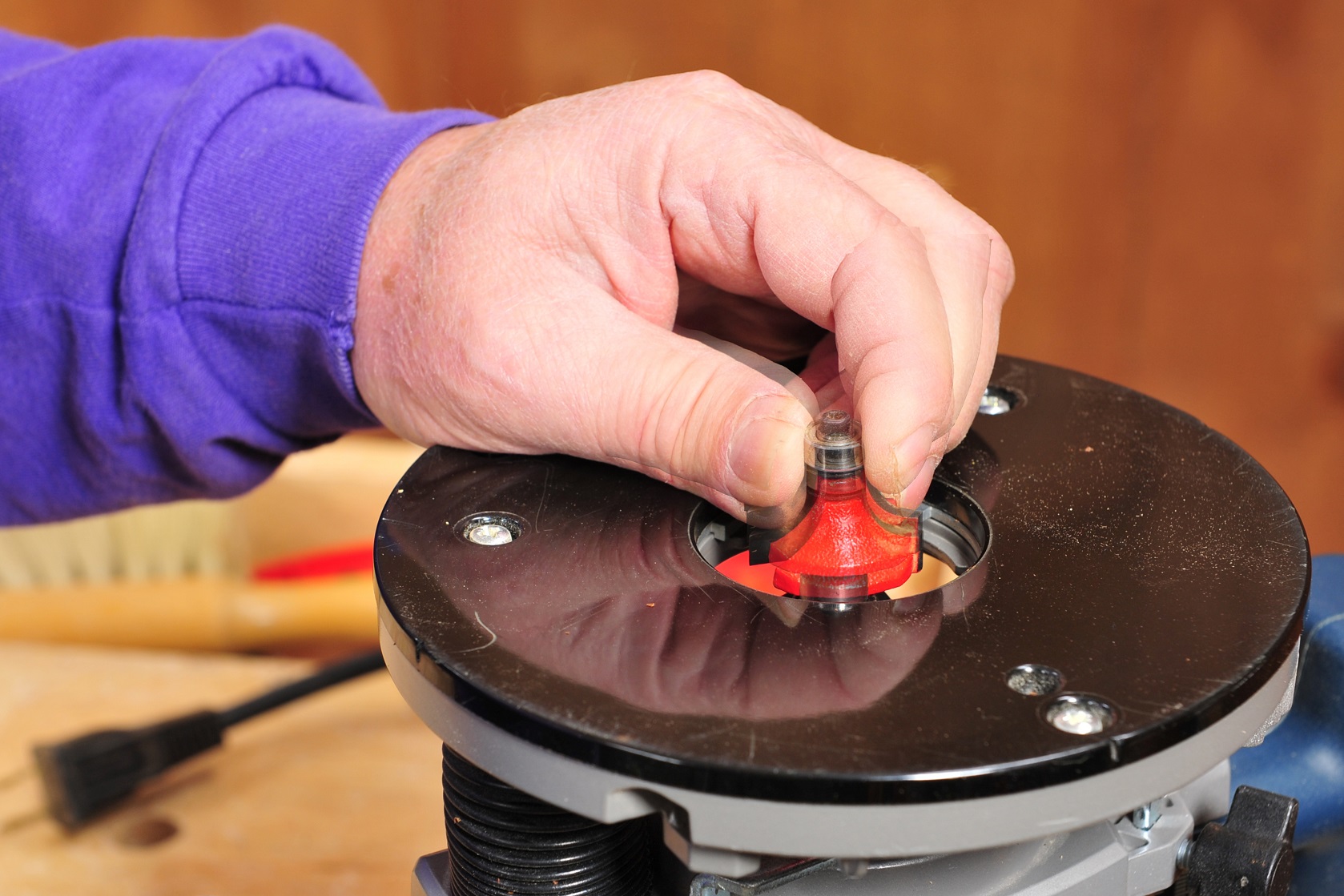 After selecting the bit you wish to use, inspect it for damage or visible dullness. Once you’re sure it’s in good shape, insert the bit fully into the router’s collet, then pull it out approximately 1/16 in. Leaving the bit in full contact with the bottom of the collet can cause it to loosen during routing—a dangerous possibility. Also, don’t over tighten the collet’s locking nut. When working with a short bit, don’t extend the shank too far out of the collet: Always have at least ¾ of the shank’s length in the collet. It should go without saying, but only chuck proper router bits in a router: NEVER use carving burrs or grinding points, drill bits, etc. even if they have ¼ in. or ½ in. shanks!
After selecting the bit you wish to use, inspect it for damage or visible dullness. Once you’re sure it’s in good shape, insert the bit fully into the router’s collet, then pull it out approximately 1/16 in. Leaving the bit in full contact with the bottom of the collet can cause it to loosen during routing—a dangerous possibility. Also, don’t over tighten the collet’s locking nut. When working with a short bit, don’t extend the shank too far out of the collet: Always have at least ¾ of the shank’s length in the collet. It should go without saying, but only chuck proper router bits in a router: NEVER use carving burrs or grinding points, drill bits, etc. even if they have ¼ in. or ½ in. shanks!
Always wear safety gear
In addition to hurling chips and dust with alarming speed, routers are notoriously noisy tools that are also capable of churning out clouds of fine dust. Therefore, safety demands that you wear proper eye, ear, and dust protection each time you rout. In addition to wearing a dust mask (I like the cloth, washable kind), connect your router to a dust vacuum or collection whenever possible. Also, don’t wear loose fitting clothing or jewelry which might accidentally come afoul of the bit. If you have long hair, wear it up or keep it under a hat.Start and stop the cut safely
Never start up a router with the bit in contact with the workpiece. Doing so when working freehand can make you lose control of the router; if it happens with a router table, the workpiece may be flung with surprising force. Starting the router with the bit touching the work may even bend the bit’s shank, or in extreme cases, damage the router. When the cut is finished, make sure the bit is clear of the work before switching the router off. When working freehand, wait until the bit stops spinning before you set the router down.
Rout in the right direction
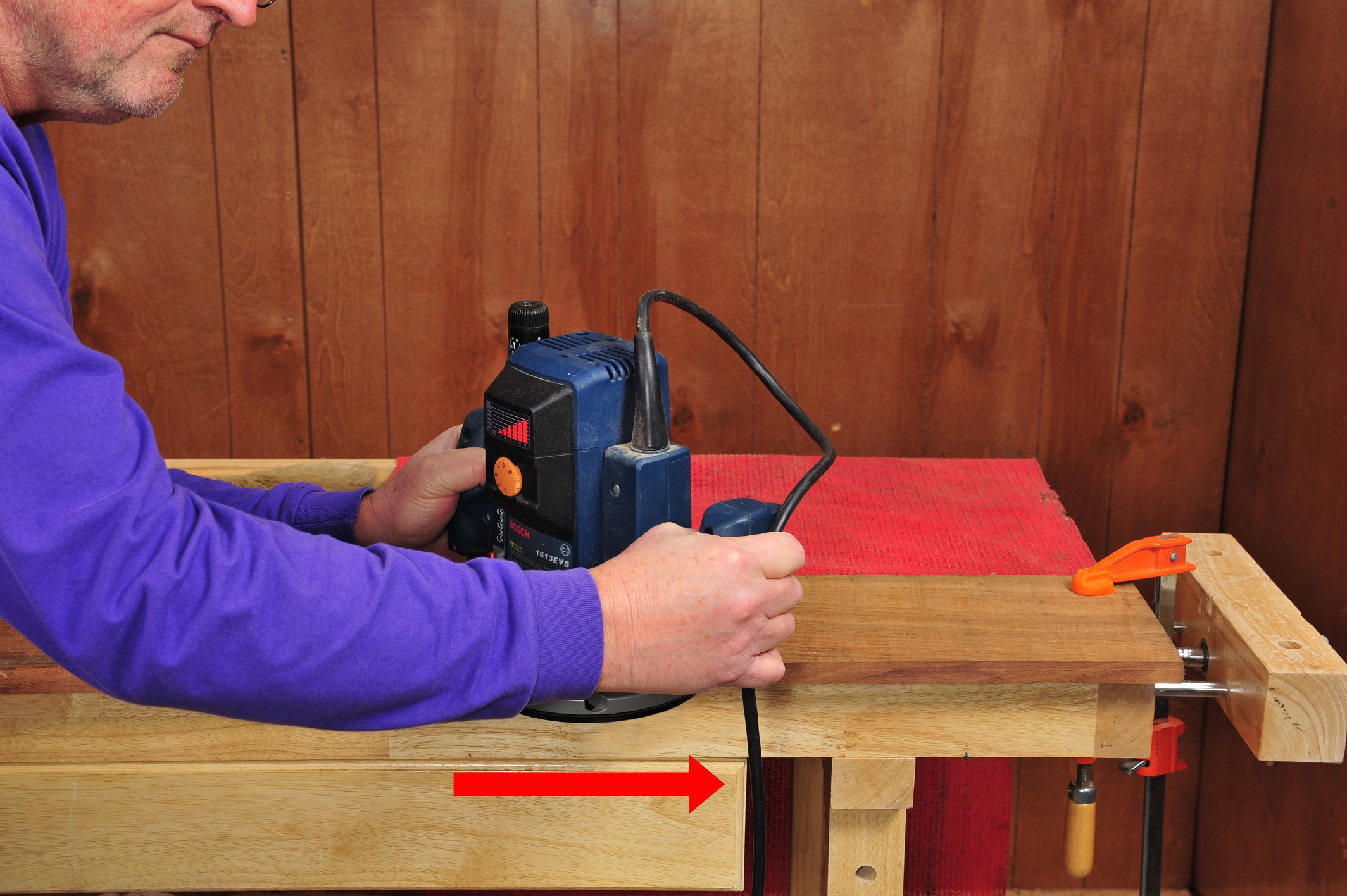 For safety sake, the workpiece should always be fed against the rotation of the bit. Freehand routing, say rounding over the edge of a shelf or cabinet, is always done moving the router from left to right. When the router is mounted in a router table, the workpiece should always be fed past the bit from right to left. Feeding the workpiece in the direction of the bit’s rotation (a process know as “climb cutting”) is very dangerous and can cause you to lose control of the router or workpiece.
For safety sake, the workpiece should always be fed against the rotation of the bit. Freehand routing, say rounding over the edge of a shelf or cabinet, is always done moving the router from left to right. When the router is mounted in a router table, the workpiece should always be fed past the bit from right to left. Feeding the workpiece in the direction of the bit’s rotation (a process know as “climb cutting”) is very dangerous and can cause you to lose control of the router or workpiece.
 (The only exception is if stock is shaped using a router table fitted with a power feeder that controls and propels the workpiece through the cut.)
(The only exception is if stock is shaped using a router table fitted with a power feeder that controls and propels the workpiece through the cut.)
Take light cuts
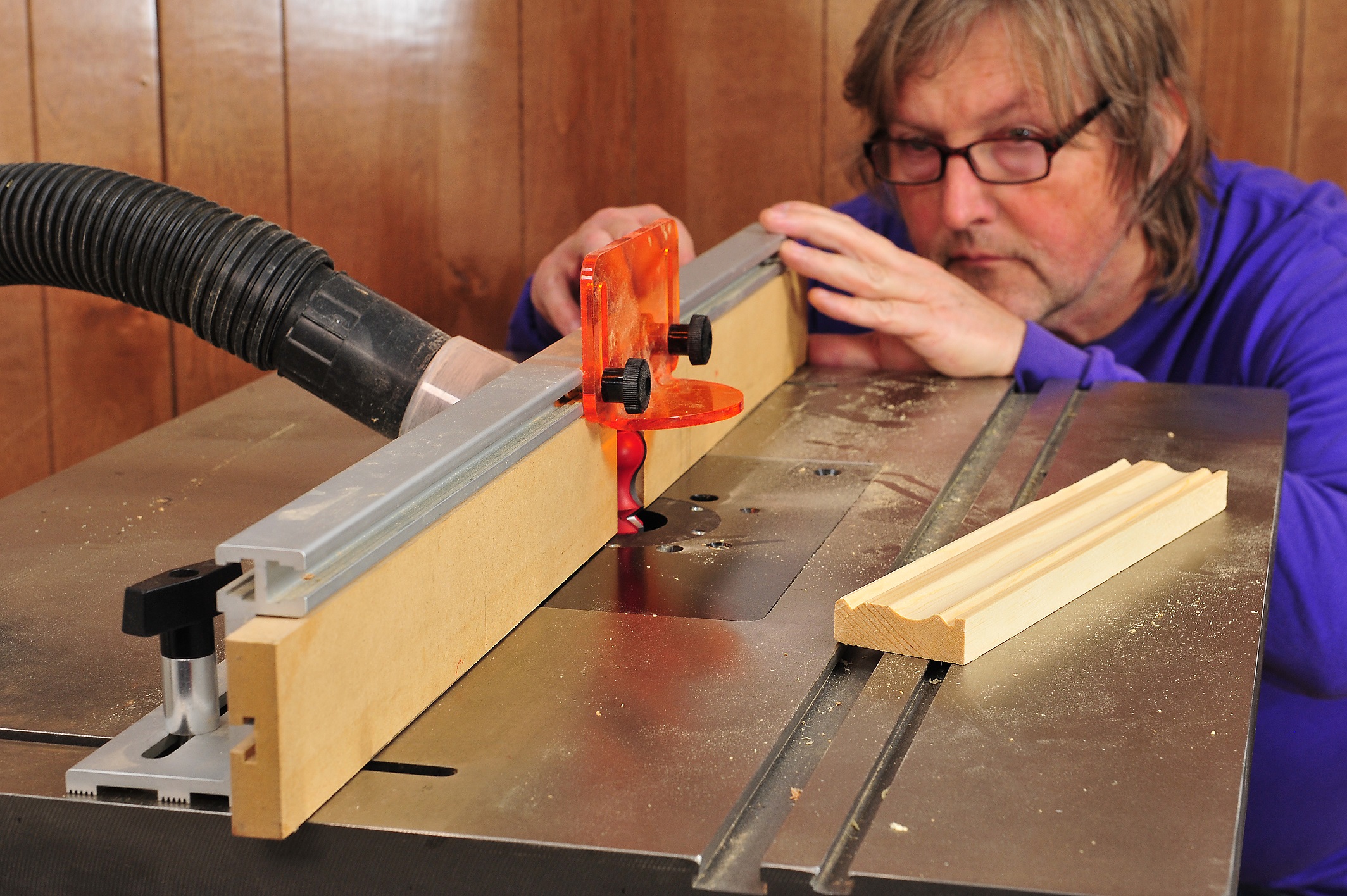 It’s both safer and cleaner to rout a large edge profile, a deep groove or a wide dado in a series of passes, rather than in a single pass. The heavy cut taken during a single deep pass may incur a dangerous kickback. It’s also more likely to cause splintering and tearout. Lighter passes are a breeze when routing with straight bits (including vee, bullnose, core box, etc.); simply reduce the bit’s cutting depth, then increase it slightly for subsequent passes until full depth of cut is achieved. When routing an edge profile with a router table, make your first pass(es) with the bit protruding just slightly beyond the fence, then move the fence back a little for each subsequent pass. If you’re routing freehand with a piloted bit, refit the bit with a larger bearing for the first pass, then replace the standard (smaller) bearing for the second pass.
It’s both safer and cleaner to rout a large edge profile, a deep groove or a wide dado in a series of passes, rather than in a single pass. The heavy cut taken during a single deep pass may incur a dangerous kickback. It’s also more likely to cause splintering and tearout. Lighter passes are a breeze when routing with straight bits (including vee, bullnose, core box, etc.); simply reduce the bit’s cutting depth, then increase it slightly for subsequent passes until full depth of cut is achieved. When routing an edge profile with a router table, make your first pass(es) with the bit protruding just slightly beyond the fence, then move the fence back a little for each subsequent pass. If you’re routing freehand with a piloted bit, refit the bit with a larger bearing for the first pass, then replace the standard (smaller) bearing for the second pass.
Never force the router
Never force the router through the cut. If excessive feed pressure is needed, reset the bit for a lighter cut. (If you’re using a particularly large bit, you may need to use a more powerful router). If routing scorches the wood, it’s likely that your bit is dull and needs sharpening or replacement. Anytime you detect unusual noise or vibration, stop the router immediately and inspect it and the bit for damage.
Save larger bits for the router table
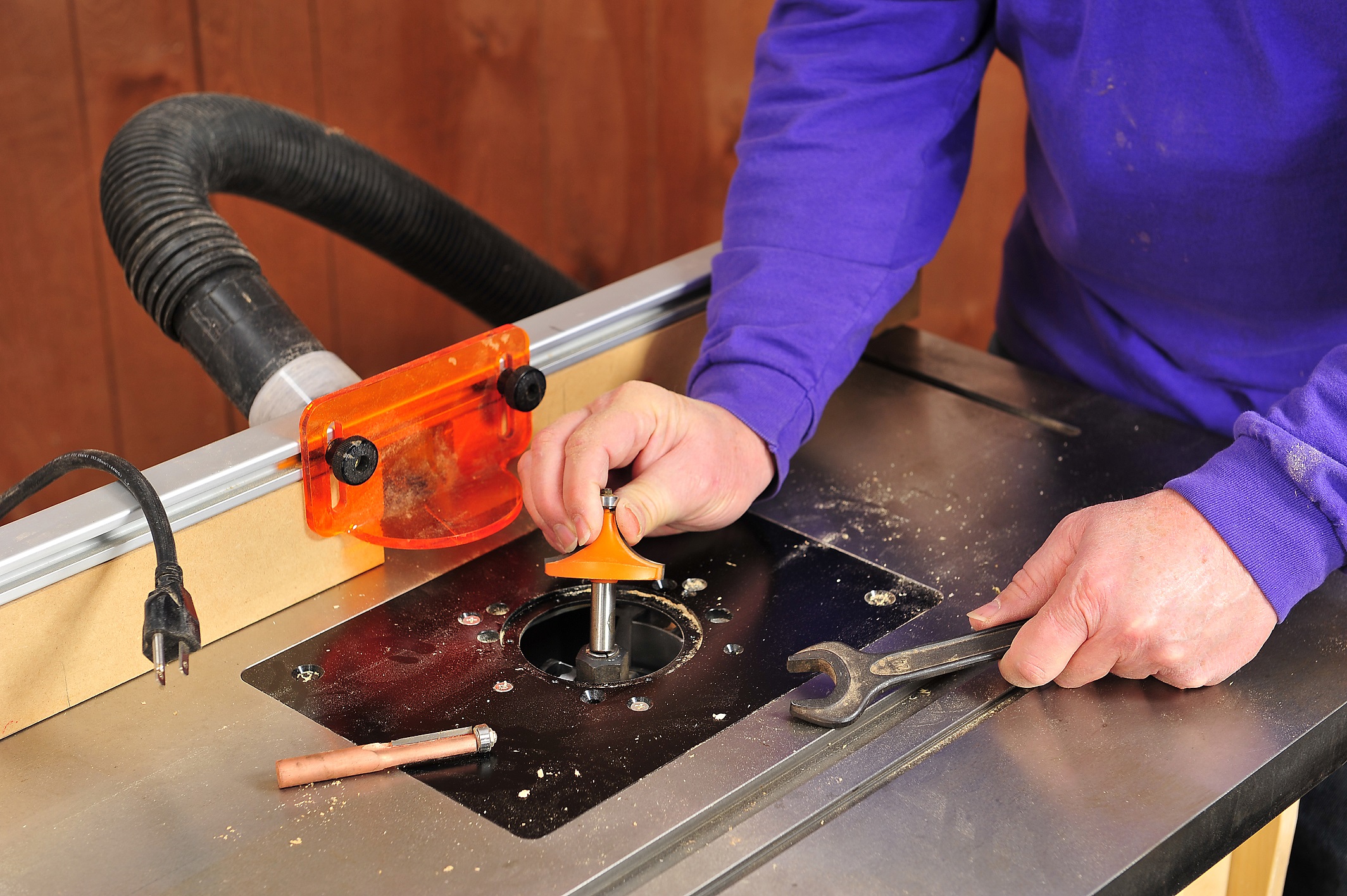 Bits larger than 1” in diameter or longer than 1-½” should not be used in a freehand router—switch to a router table for those cutters. Larger diameter bits should have a ½” shank and be used in a variable-speed router with its RPM should set to suit the bit’s cutting diameter: 18,000 RPM for bits between 1” and 2” in diameter; 16,000 RPM for bits between 2 in. and 2 1/2 in. in diameter (check your router’s manual or literature that came with the bit for more specific speed recommendations).
Bits larger than 1” in diameter or longer than 1-½” should not be used in a freehand router—switch to a router table for those cutters. Larger diameter bits should have a ½” shank and be used in a variable-speed router with its RPM should set to suit the bit’s cutting diameter: 18,000 RPM for bits between 1” and 2” in diameter; 16,000 RPM for bits between 2 in. and 2 1/2 in. in diameter (check your router’s manual or literature that came with the bit for more specific speed recommendations).
Don’t trap the stock
When shaping an edge on the router table, always rout with the bit inside the fence and the material edge against the fence—never rout the far edge, which traps the stock between the bit and the fence. This can cause the bit to catch the wood and hurl it suddenly. Having the fence far away from the bit makes it harder to use the proper guards.
Rout small parts safely
It’s never safe to get your fingers too close to a spinning router bit. So when a part gets too small to hold safely while routing on a router table, secure the part in a jig such as a coping sled or other sliding carrier. If the part has parallel (or near-parallel) sides, an option is to hold it in the jaws of a wooden handscrew-type clamp. An even better option is to do as much routing as you can on a larger piece of stock, and then cut it down to its final size after the routing is complete.


when the imposter is sussy😳😳😳
Thank you for sharing this useful knowledge. Just loved it! https://woodworkingtoolshq.com/
I would appreciate all the help in purchasing a router palm or plunge. I would also appreciate guidance on selecting router bits. I am a first time user of routers. Thanks,
these are very useful tips
From what I've read, few (or no?) bits are safe for use beyond 25,000 rpm. Why do many trim routers have speeds, sometimes not adjustable, to 30,000 rpm and more? Is it safe to use a less than 1" diameter bit with a trim router having a no load speed of 30,000 rpm?
How to Buy a Router Download Now link is broken. It brings up a photo of a How to Buy a Router on which the only thing that works is the X (close window).
Thank you ! Handy list of safety tips. Made it into my top 10 safety sites for routers ... Now off to make a push block, featherboard and coping sled !
Hi
making a head board want to cut a grove to fit the shelvesin thesiges
This was really, really helpfull, exactly what I was looking for when I searched this up! Thanks!